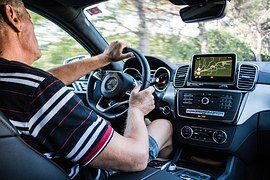
Many drivers can become overwhelmed and intimidated at the thought of approaching junctions that are busy, but it is important to instil knowledge and confidence to avoid accidents and panic. In the simplest definition, a junction is when two or more roads come together, and can vary in type, view, and difficulty. Junctions in a neighbourhood are going to be much less complicated than junctions on major motorways; however, the driver has the responsibility to remember that even the most insignificant junction can pose a hazard. This means they must always be prepared for risk and the unexpected, regardless of how simple it may appear to be. A driver will encounter five different types of junctions while driving: T junctions, Y junctions, staggered junctions, crossroads, and roundabouts. Every type of junction listed can vary in size and difficulty on the roadway, but understanding the basics of approaching each is going to be the biggest benefit for everyone on the roadway. One of the fundamental aspects of approaching any junction is knowing ahead of time what the driver needs to do after getting past the junction. For example, this could mean knowing whether a driver must continue on the main road or if their path requires them to go in a different direction after getting through the junction. Before reaching the junction, most roads will have signs indicating what the driver is to expect as the continue forward, so it of the utmost importance that the driver constantly pays attention to the road markings. Even more, if there are no signs indicating the priority of the junction ahead, driver should proceed with even more caution.
If the driver is turning left from a major road to a side road, they must be sure to know what type of junction they’re approaching while also looking as far ahead as possible for distance, obstructions, and possible hazards. After identifying the basics, the driver must then check their interior and left mirrors to gauge the speed of the surrounding vehicles (including cyclists) behind and beside their car. Alongside checking this, the driver should be sure to indicate their direction so the surrounding parties are aware of their intention before the make their move. Next, it is best to think about the manoeuvring of approaching a junction in multiple phases.
It is important for the driver to solidify their position when they employ their signal. This means that the driver should be in the left lane with their nearside about 1 metre from the kerb (this may fluctuate depending on the size of the road). To ensure that the driver does not mount the kerb, they must be sure that the front of their car is level with the start of the corner before making the turn. This is important because drivers can severely damage their car if they turn too quickly or too late. Next, the driver needs to adjust the speed of their car so that it is on par with the sharpness of the turn and width of the road ahead of them. This will help the driver to not overcompensate, taking their car for too wide of a turn. Gauging the speed and correct gear to be in before turning will help the driver maintain control, and there will often be signs to assist the driver in knowing how fast and wide the approaching turn is. Finally, the looking phase of making a left turn should always be applied, even if the entire view of the road that the driver is turning down isn’t clear until they completely make the turn. When following through with this, it is essential that drivers are looking out for any possible hazard around them.
Turning right is very similar to turning left, with slight differences that should be noted. When going right, drivers should attempt to be as close to the centre of the road as possible in order to allow other cars to pass on the left. When on a one-way road, make sure to move to the furthest right hand side where road markings can help with the exact choice. It is always essential that drivers be away of all types of oncoming traffic, whether that be cyclist or motorists, as they are often a lot hard to see than larger vehicles. If there is ever any doubt about whether the driver can make a turn, then the best rule to follow is if they could walk across the street safely, then can probably make the turn safely. Do not change speed as that can have a negative impact on others, and if there is ever any doubt, it is always best to just wait. Again, always be on the look out for any type of possible hazard or obstruction that could possibly be ahead.

Recent Comments